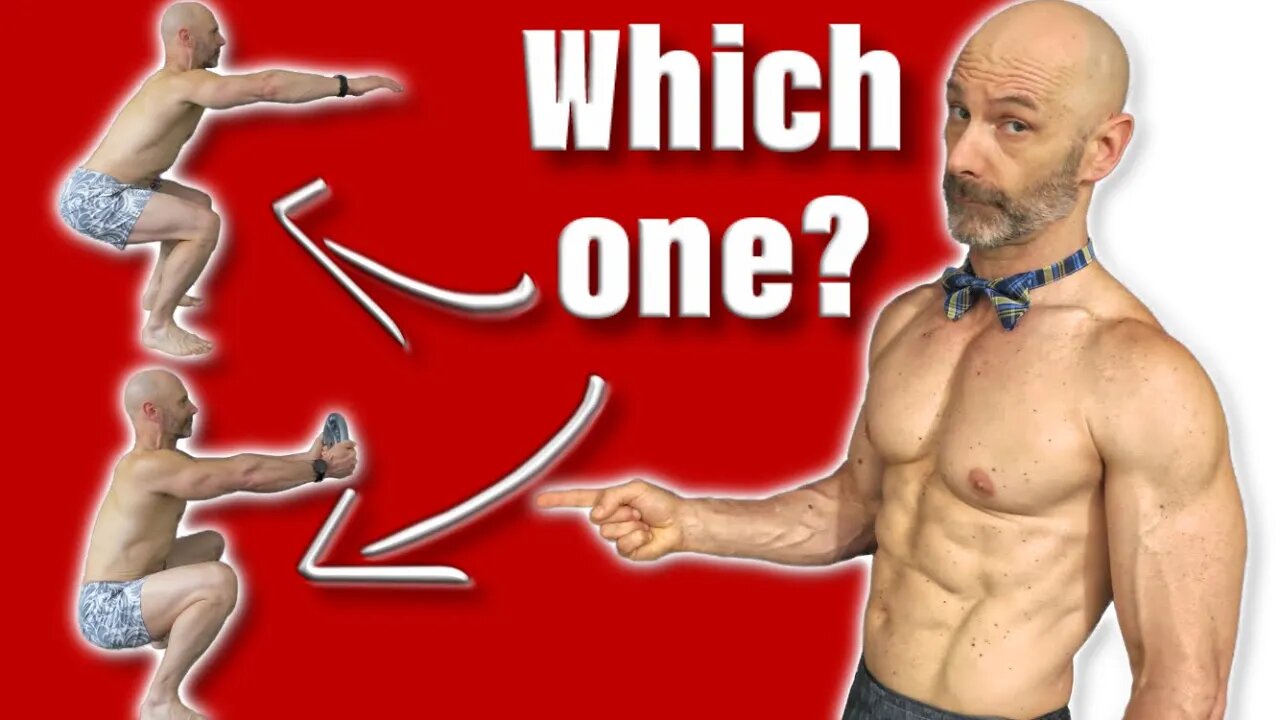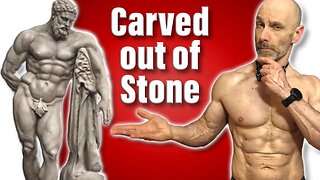Premium Only Content

How Deep Do You Really Need To Squat? (For Muscle Growth)
One of the first things we need to recognize when it comes to squatting for muscle growth is that our bone structure, mobility and strength all affect how low we can squat and how are squat should be set up.
For example, people with long femurs and short torsos aren’t going to be able to squat as deep because they have to lean farther forward to maintain the bar path over their feet, increasing the risk of their low back rounding.
Our hips and, in particular, the angle and depth of the socket affect our squat. Typically our hip socket angle is about 15 degrees. If it’s less than this, then as we squat and reach the bottom position, the neck of the femur can hit the edge of the socket, stopping us from going any lower.
If you are interested in losing body fat and adding muscle, please email me at 1shark1bite@gmail.com for information on my personal training services.
Here is the link to FortisFight https://www.fortisfight.com/product-category/men/ and use my affiliate discount code FITAND50 at checkout for 15% off you next purchase on all of their apparel.
If you would like a set of Torrobands for yourself, here is my affiliate link so you can receive 50% off on your purchase https://sale.torroband.com/?affId=555B3E5D
Check your testosterone levels from home. Just click this link http://trylgc.com/laurence and receive 30% off with code: LAURENCE30 I receive commissions on referrals to LetsGetChecked. I only recommend services I know and trust.
My Affiliate link to Lebert for their Equalizer bars and more; https://lebertfitness.com/?ref=FitAnd50 and use the discount code FITAND50 you will receive 20% off your purchase
Facebook; https://www.facebook.com/Fit-and-50-5...
My Amazon page link; https://www.amazon.com/shop/fitand50
With hip socket depth, the deeper the socket, the more stable the joint, but the more apt we are to hit bone-on-bone in the bottom position. The more shallow the socket, the deeper we can squat, but the trade-off is less stability.
Finally, the shape of our femur affects depth. The more vertical the top of the bone is where it attaches to the socket, the more difficult it will be to achieve a deep squat.
So no matter what the science says, we first and foremost need to recognize the limitations of our body and make adjustments to compensate.
A study done in 2019 did find muscle growth in the gluteus Maximus, and the adductor muscles were significantly greater in the full squat than in what they called a half squat, but they were doing a parallel squat.
When it comes to building muscle, we always train with a full range of motion. We don’t do half repetitions when we bench press or arm curl. Unless, of course, we’re ego-lifting. But that’s about trying to impress in the gym and has nothing to do with muscle growth.
A study published in the journal of strength and conditioning that included squats agrees with this. Finding “where increased muscle strength and size are the objectives, we demonstrate here that range of motion should not be compromised for greater external loading.
There are things we can do to increase the range of motion on our squats. The most common one is elevating our heels. This helps if we have mobility issues in our ankles, which tight calves can cause.
When you buy shoes made for squatting, they come with a raised heel, so you don’t need to use plates.
When I first started to deep squat, I needed to stack up 3 plates to get right ass to grass without rounding my low back, but now that I have been squatting deep for a while, I only need a single plate as my ankle mobility has improved from doing deep squats.
For us home workout guys, another advantage is deep squats bring us to technical failure with less weight.
I use goblet squats so I can do a full range of motion. Having the resistance in front allows for a more upright body position and can help those guys with long femurs get a deeper squat.
A front squat is going to allow you to go deeper than a back squat, and in turn, a high bar squat will be easier to squat deep with than a low bar squat as the low bar squat has you leaning farther forward in order to keep the bar path over the middle of the foot.
Going with a wider stance allows us to squat deeper for a couple of reasons. It reduces the amount of our leg or femur that travels behind the bar path enabling us to remain in a more upright position resulting in a deeper squat.
Squatting with a wide stance opens up the hips changing the orientation of the neck of the femur in relation to the hip socket. This, too, allows for a deeper squat.
When it comes to our knees, and I have one that gets cranky from time to time. If they are causing you pain, then it’s best to avoid any range of motion where you feel discomfort. You’re better off doing a part squat pain-free.
-
 4:47
4:47
Fit and 50
1 year ago $0.04 earnedThe Best Way to Choose Exercises for Muscle Growth (Greek god Physique)
5482 -
 29:53
29:53
MYLUNCHBREAK CHANNEL PAGE
1 day agoUnder The Necropolis - Pt 1
72.9K42 -
 2:00:10
2:00:10
Bare Knuckle Fighting Championship
3 days agoCountdown to BKFC on DAZN HOLLYWOOD & FREE LIVE FIGHTS!
36K2 -
 2:53:01
2:53:01
Jewels Jones Live ®
1 day agoA MAGA-NIFICENT YEAR | A Political Rendezvous - Ep. 103
71.4K20 -
 29:54
29:54
Michael Franzese
9 hours agoCan Trump accomplish everything he promised? Piers Morgan Article Breakdown
87.6K45 -
 2:08:19
2:08:19
Tactical Advisor
13 hours agoThe Vault Room Podcast 006 | Farwell 2024 New Plans for 2025
166K11 -
 34:12
34:12
inspirePlay
1 day ago $4.94 earned🏆 The Grid Championship 2024 – Cass Meyer vs. Kelly Rudney | Epic Battle for Long Drive Glory!
71K8 -
 17:50
17:50
BlackDiamondGunsandGear
11 hours ago $1.70 earnedTeach Me How to Build an AR-15
46.1K4 -
 9:11
9:11
Space Ice
1 day agoFatman - Greatest Santa Claus Fighting Hitmen Movie Of Mel Gibson's Career - Best Movie Ever
107K45 -
 42:38
42:38
Brewzle
1 day agoI Spent Too Much Money Bourbon Hunting In Kentucky
71.3K12